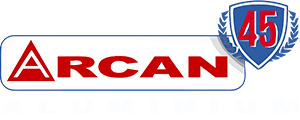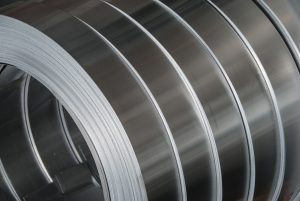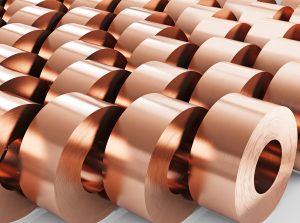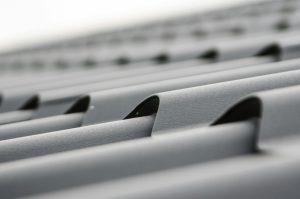What are you looking for today?
Enter your keyword and press "Enter"

514-331-0062
Is metal roofing worth it for you? Discover how metal roofs can provide durability, energy efficiency, and long-term savings. This guide gives you an in-depth look at the benefits, materials, costs, and installation process of metal roofing. As your trusted construction materials supplier, we can guide you in finding the best materials to suit your project needs.
Opting for a metal roof comes with the distinct benefit of exceptional longevity. Metal roofing can outperform traditional asphalt shingles, which typically require replacement within 15 to 30 years. With an impressive lifespan ranging from 40 to 80 years, roofs crafted from metal provide a resilient option that remains sturdy over decades. They are ingeniously built to combat various weather conditions such as intense winds and substantial snowfall—ensuring your abode is shielded year-round. These roofs boast high resistance against fires, pests, and decay—a testament to their reliability and offering homeowners not only peace of mind but also diminished upkeep expenses.
The energy-efficient nature of metal roofing stands as another notable benefit for those who install it on their homes. Capable of reflecting heat away from the structure they cover. Metal roofs substantially decrease air conditioning needs during hot seasons by upholding cooler interior temperatures—an efficiency that can translate into roughly 40% savings on energy costs owing to this reflection capacity. This reduction in temperature regulation demands does more than enhance indoor comfort. It supports environmental conservation through lowered power utilization, too. In addition—and in line with eco-friendly practices—metal rooftops frequently incorporate recycled content at inception and remain completely recyclable after serving their purpose atop homes, underscoring sustainable aspects tied closely to such materials’ usage.
Selecting an appropriate metal roofing material is vital to obtain the ideal mix of looks, longevity, and affordability. Steel, aluminum, and copper are prevalent choices for metal roofing materials. They each provide different benefits along with varying cost considerations. Being knowledgeable about the individual attributes of these metals will assist you in choosing a material that meets your requirements without exceeding your financial plan.
Now let’s delve into the specific qualities of steel, aluminum, and copper to understand their characteristics better.

Steel metal roofing stands out as a prime option owing to its robustness and endurance. Galvanized steel, which is zinc-coated, presents outstanding resistance against corrosion. Similarly, galvalume, blending zinc with aluminum, affords superior long-term durability.
Suited for an array of uses spanning residential properties to industrial structures, steel roofing comes at diverse price ranges, catering to various financial plans. It boasts formidable resilience against natural forces such as wind and rainstorms, ensuring dependable longevity. Ensure you understand all the steps of steel roofing installation before you start your project.

Known for its durability while being lightweight, aluminum roofing presents an exceptional strength-to-weight ratio that surpasses even steel. This attribute renders it a prime selection for homeowners in pursuit of a robust and enduring roofing solution.
Capable of enduring up to half a century with minimal significant repairs required, aluminum roofs also have the benefit of reflecting sunlight. This reflection aids in reducing air conditioning costs by improving the energy efficiency of homes. Consequently, aluminum serves as both an economically savvy and eco-friendly choice for contemporary residences.

Copper roofing is renowned not only for its striking beauty but also for its remarkable durability. As it ages, copper acquires a distinctive patina that adds to its aesthetic value without compromising on its robustness. Capable of lasting over 60 years, copper ranks among the most enduring materials used in roofing.
The significant expense associated with copper roofing renders it a luxury choice suited to those prepared to invest in both elegance and long-term performance.
The expense involved in setting up a new metal roof is subject to considerable variation, which hinges on variables such as the specific metal used for material, labor charges, and other ancillary costs. The majority of the overall cost—often exceeding two-thirds—is attributed to the materials themselves, with prices fluctuating based on the chosen type of metal. The cost of labor may also differ due to factors like geographical location, the intricacies involved with your particular roof design, and how easy it is to access your roof.
Additional financial considerations encompass items such as underlayment materials required for installation, necessary permits from local authorities or homeowners’ associations that govern building codes and aesthetics in many areas. Along with any fees associated with designing a custom roofing solution, if standard options do not suffice or meet personal preferences. Being aware of these different elements contributing to costs can assist in creating an accurate budget plan when considering installing a new metallic covering for your home’s uppermost structure.
The price of metal roofing materials varies greatly, influenced by the metal type and the quality level of the materials used. Steel roofing, for example, ranges from $6.00 to $8.00 per square foot in cost. Aluminum roofing tends to be pricier, with an average cost falling between $9.50 and $12.00 per square foot. Copper tops out as one of the premium choices at a range of $20 to $40 per square foot.
On the more economical end of the spectrum are basic metal roofs that can be purchased for roughly about $4.50 to $6.50 per square feet — these types present some of the most affordable options available on market today without sacrificing material integrity or longevity when correctly installed which may affect overall costs associated with executing your intended roofing project investment significantly based upon chosen variables such as raw resource expense fluctuations & budgetary constraints involved within planning stages prior implementation processes commence accordingly moving forward respectively thereof consequently thusly.
The expense of labor for the installation of a metal roof typically varies between $3 and $11,80 per square foot, influenced by elements including the slope and configuration of the roof, as well as prevailing local labor charges. For a metal roof encompassing 1,700 square feet, one might expect to pay anywhere from $5,100 to $20,060 in labor costs.
Roofs that are more inclined or possess intricate designs present greater challenges in terms of accessibility, which can extend both time and expenses needed for installing them. There is substantial regional variation in labor pricing. Areas like Texas often have reduced rates relative to California, which reflects their respective differences in cost of living standards.
The overall price of your metal roofing endeavor is not only influenced by the cost of materials and labor, but also encompasses various ancillary charges. The expense for underlayment, along with its installation, can fluctuate between $0.16 and $1.76 for each square foot. Permit fees may escalate to as much as $1,000 contingent upon municipal codes.
It is advisable to procure a greater quantity of roofing material than what calculations suggest in order to adequately accommodate any potential wastage that might occur during installation. Electing more robust trim and flashing materials can add to the total expenditure. These choices are worthwhile as they contribute to extending the lifespan and enhancing the efficacy of your roof’s performance.
Ensuring a successful installation of a metal roof requires thorough preparation. This includes precise measurement of the roof area, assembling all required tools and materials for the job, and stripping away any pre-existing roofing materials. By attending to each step meticulously, it is possible to facilitate an efficient installation process and secure optimal performance from the newly installed metal roof.
To elaborate, please click here. On these preparatory measures:
It is essential to obtain precise measurements in order to purchase the right quantity of materials and guarantee an effective installation. To achieve more accurate readings, opt for measuring when the weather is dry.
Drawing a basic representation of your roof’s design can facilitate measurement efforts. Remember to measure both dimensions – length and width – while considering the slope of the roof. Also, make sure you include elements such as chimneys and skylights in your calculations so that no section gets neglected. Factor in any impediments as well as the pitch of the roof.
Before installing your new metal roof, ensure you have all the necessary tools and materials to hand.
When purchasing materials, allow for an extra 10% to compensate for losses due to cutting or adjustments.
It is essential to eliminate existing roofing materials when gearing up for the installation of a new metal roof. Clearing away the old material guarantees that there will be a pristine and solid foundation upon which to install your new metal roofing.
Following the removal of previous materials, it’s important to carefully examine the structural framework of your roof for any impairments. Addressing these issues promptly before installing your new metal roof helps safeguard its durability and functionality over time.
The procedure for installing a metal roof requires meticulous attention to detail to guarantee its long-lasting durability and ability to withstand the elements. This involves laying down an underlayment, fitting and affixing the metal panels properly, and reinforcing all edges as well as trims across the entire roof. Each stage is vital for ensuring that the roof functions effectively.
To delve into these steps more thoroughly:
Initiating the installation of a metal roof requires first placing an underlayment, serving as a protective layer between the roofing structure and the metal panels. This step is crucial for avoiding water penetration and boosting thermal insulation.
Begin at the lowest part of the rooftop, carefully arranging synthetic underlayment with each layer slightly overlapping its predecessor to facilitate proper drainage. It’s imperative to use electro-galvanized roofing nails during this process since their resistance to rusting and corrosion ensures a secure hold. The success of installing these panels depends on keeping the underlayment smooth without any creases, thus guaranteeing superior moisture defence.
After laying down the underlayment, proceed to install the roof panels. It’s critical to position each metal panel precisely for leak prevention and long-lasting durability. Make sure all panels are firmly fixed in place, which will help them withstand high winds while considering the layers of roofing beneath.
When installing seams or fasteners, it is crucial to adhere strictly to recommended procedures and utilize expert tips on metal roofing installation. This ensures that there won’t be any leaks due to improper handling. Avoid over-tightening the fasteners so as not to damage them or compromise their effectiveness.
It is essential to firmly attach edges and trims for both a polished appearance and additional safeguarding from weather conditions. When affixing gable trim, make certain that it extends sufficiently over the panels and use screws spaced consistently to guard against wind damage.
In the case of installing a rake edge, apply an appropriate sealant beneath the trim before fixing it in place with suitable screws to improve its longevity. Correct installation of flashing requires positioning it underneath shingles or panels and ensuring it is properly sealed off to block any water ingress.
It’s crucial to keep up with the maintenance of a metal roof to guarantee its durability and peak functionality. By conducting frequent checks, addressing typical repairs promptly, and adhering to ongoing upkeep procedures, you can prolong the lifespan of your roof while avoiding expensive problems.
We will delve deeper into these specific steps for maintaining and repairing metal roofs.
It’s essential to conduct routine inspections to spot potential problems promptly, averting expensive repairs. By performing annual checks, one can detect early signs of leaks and corrosion that could otherwise worsen over time. Undertaking maintenance at least annually preserves the structural soundness of the roof. During these inspections, it is possible to observe if there are any detached panels or indications of rusting, addressing these minor concerns before they develop into major issues.
Applying a superior protective coating on metal roofs can inhibit corrosion and enhance their longevity. Ensuring gutters and drains are cleared once a year helps avoid the accumulation of water, which is prone to cause corrosive damage.
Repairs for metal roofs often involve rectifying leakages, substituting impaired panels, and treating areas of rust to preserve their structural soundness. It is crucial that any signs of rust or damage on the panels be dealt with swiftly to avert additional harm. Ensuring that flashing is correctly installed around perimeters and openings is vital both for preventing water seepage and improving the aesthetic appeal of the roof.
It’s important that flashing fits accurately in order to safeguard joints and points where different parts of the roofing converge. The gable trim, along with rake edges, should be attached securely not only to enhance visual neatness but also to block water from entering.
Maintaining a metal roof necessitates consistent cleaning to eliminate accumulated debris, along with painting as a preventative measure against rust. Securing effective drainage is also crucial. The application of new paint not only safeguards the metal from corrosion but also improves the visual appeal of the roof.
Opting for expert installation when fitting a metal roof leads to an extended service life and diminishes the frequency of maintenance requirements. Adhering to these care strategies enables homeowners to preserve their roofs in prime condition over many years.

Metal roofing materials are recognized for their superior longevity and durability when compared to other options, such as asphalt shingles. They have a lifespan ranging from 40 to 80 years, which is significantly longer than the approximate 20-year lifespan of traditional asphalt shingles. Metal roofs provide robust protection against severe weather conditions like high winds and heavy snow.
Despite having an upfront cost that is not worth it, it is worth it. Two to three times greater than that of asphalt shingles, the long-term financial benefits stem from lower maintenance requirements and less frequent replacement needs, making metal roofing an economically sound investment over time. Many metal roofing materials consist of recycled content and can be completely recycled after their service life ends, rendering them a favorable choice for environmentally conscious practices.
When contemplating whether to personally install your metal roof or enlist the expertise of professionals, it is essential for homeowners to evaluate the advantages and disadvantages associated with each method. Undertaking a DIY installation could result in considerable cost savings and a sense of accomplishment. Nevertheless, installing metal roofing is seen as an intricate task that necessitates specific skill sets.
Conversely, engaging professional services guarantees that the roof will be installed correctly, reduces potential problems down the line, and typically includes warranties that protect both materials used and labor provided. Now, let’s examine in greater detail what factors should influence your decision between DIY versus professional installation approaches for metal roofs.
Undertaking a DIY installation of metal roofing materials can be gratifying, yet it’s not without its hazards. An improperly installed roof might succumb to storm damage and develop leaks, resulting in expensive repairs due to faults in the workmanship. For homeowners who are considering installing their own roof, it is imperative that they possess an extensive comprehension of the installation process and have the requisite skills for proper execution.
Given the intricacies involved with setting up metal roofing materials, there’s a considerable scope for error that renders DIY projects demanding but still within reach for individuals who are sufficiently prepared and assured about their competence.
Employing a professional roofing contractor comes with significant benefits, such as confidence in the quality of work and assurance of standards. Warranties offered by these professionals often extend to both the materials used and the labor provided, offering homeowners protection against future expenses arising from potential defects.
In order to be eligible for a material warranty on their roof, manufacturers may stipulate that installation is carried out by a certified professional. By involving an expert roofer, one can ensure compliance with industry benchmarks, elevating not only quality assurance but also securing long-term durability and peak performance from their roofing investment.
To summarize, the advantages of a metal roof are many, spanning from enduring sturdiness to energy savings and eco-friendliness. Homeowners can make educated choices by grasping the variety of materials used in metal roofing, understanding cost implications, and familiarizing themselves with intricate installation and upkeep procedures. The crux is securing an impeccably installed roof—whether through professional services or a DIY endeavor—that optimizes both longevity and functionality of the roof. An investment in metal roofing transcends mere aesthetic improvement. It’s about ensuring sustained worth and tranquillity for homeowners.
The cheapest metal roof style is typically corrugated metal roofing, known for its affordability and durability.
It’s an excellent option for those seeking an economical yet effective roofing solution.
Installing a metal roof provides durability, energy efficiency, and environmental advantages, making it a smart long-term investment for homeowners.
Numerous materials are utilized in metal roofing, including steel, aluminum, and copper. Each of these offers unique advantages and financial implications.
Choosing the appropriate material for your roofing project hinges on your individual requirements and fiscal constraints.
The total investment required for the installation of metal roofing is shaped by several factors, including the price of materials, labor charges, and extra requirements such as permits and underlayment.
To comprehend the comprehensive expenditure involved in installing a metal roof, one must take all these elements into account.
A metal roof should be inspected at least twice a year to identify potential issues early and ensure its longevity.
Regular maintenance helps maintain the roof’s integrity.